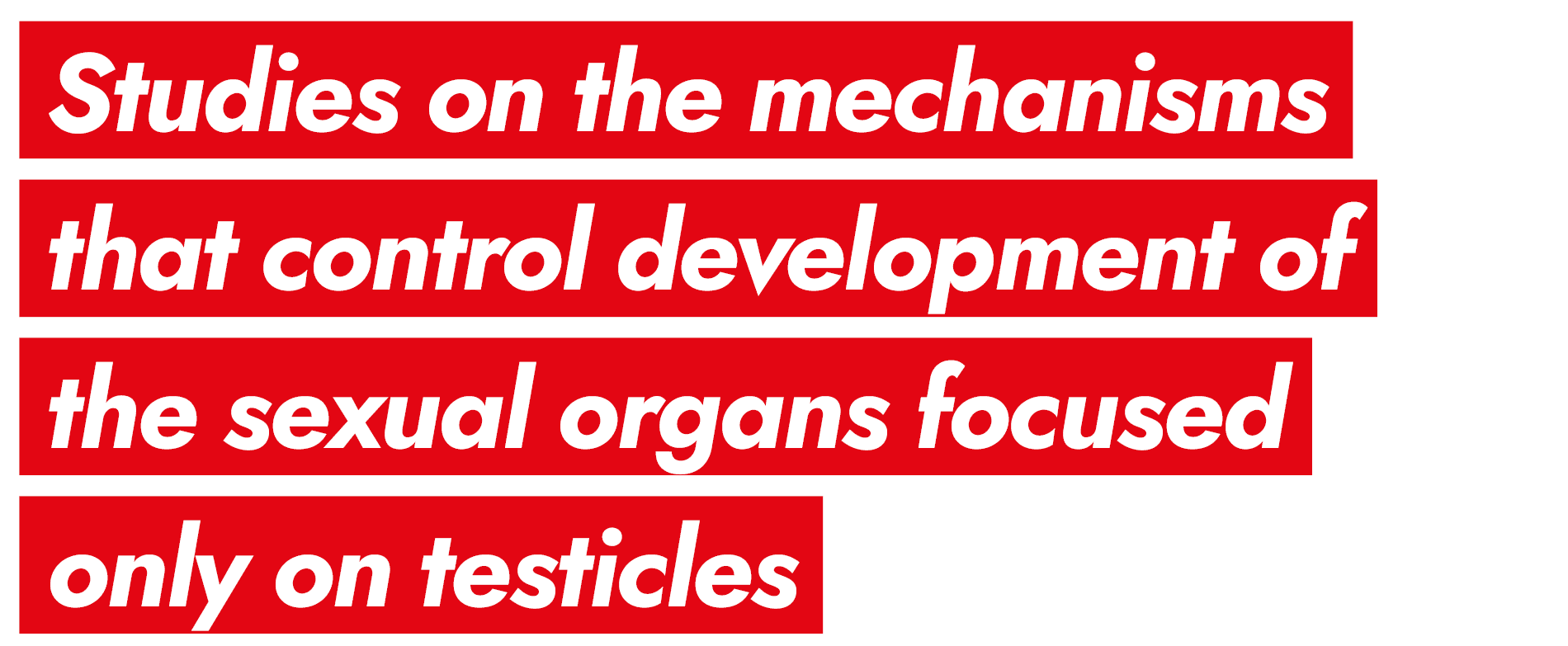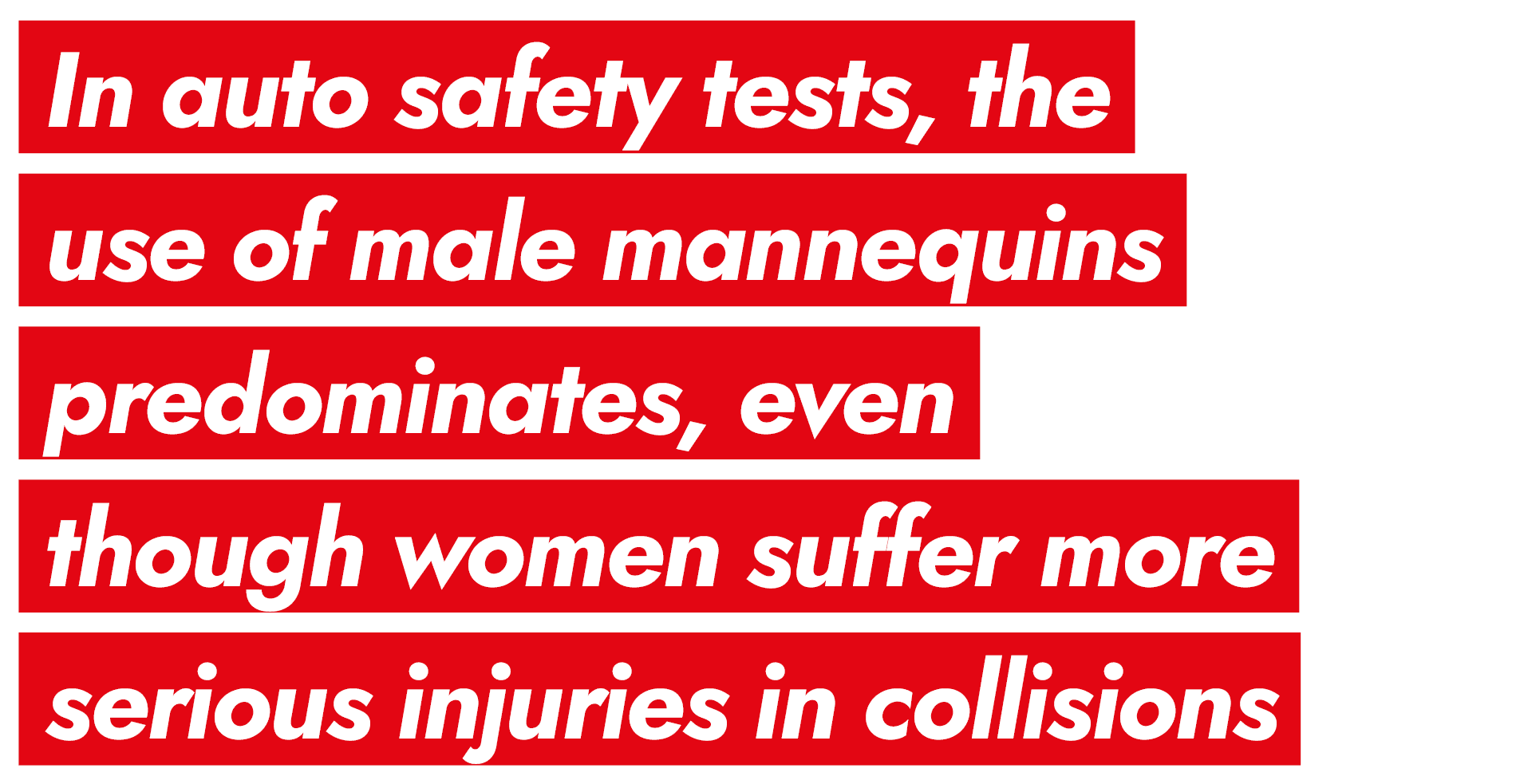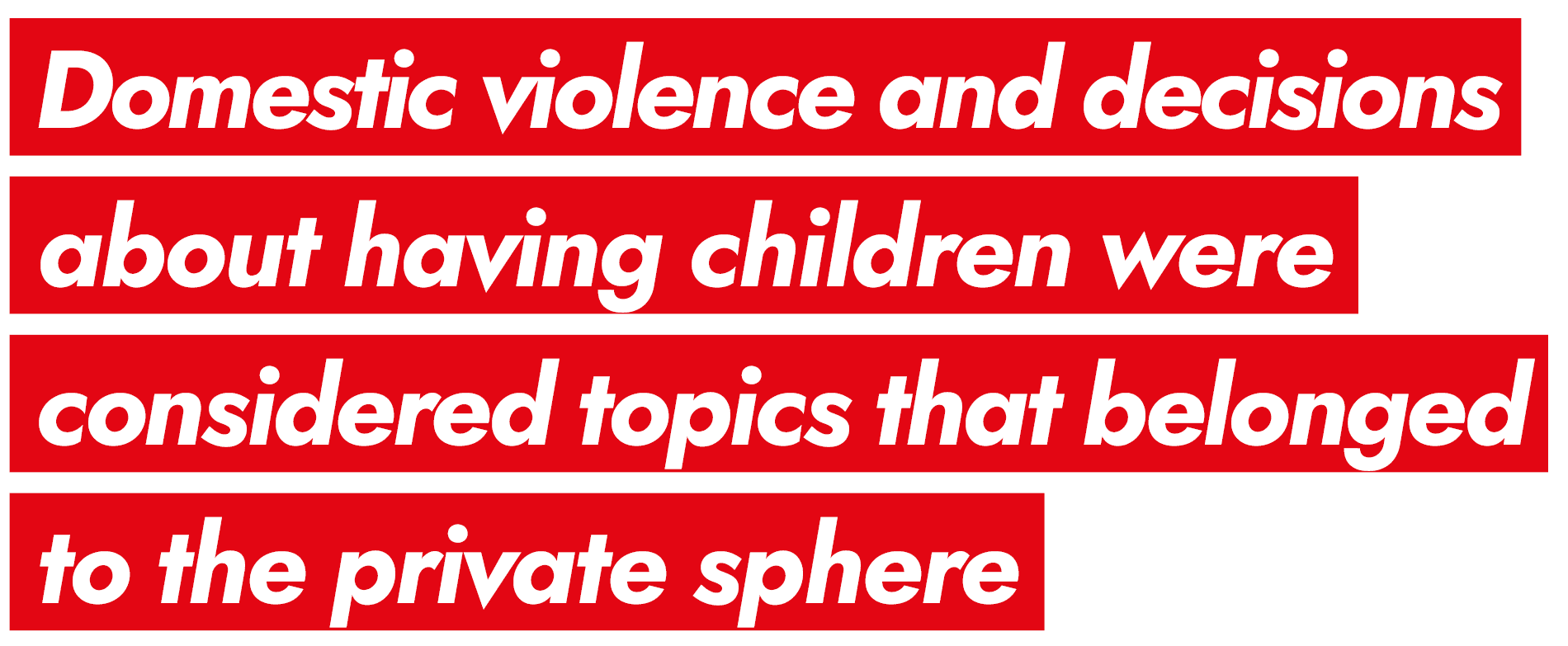What impact does the presence of women have on science? And what impact does the discussion of gender have on the results of scientific research? An article published in 2018 in Lancet Oncology shows that considering the variable of gender in understanding genetic and hormonal dynamics can result in innovations in cancer immunotherapy. In 2017, a study published in Nature Medicine revealed that the discovery of sexual differences in physiological molecular patterns is improving the development of drugs for pain relief and depression. In a movement that began in the late 1980s and gained momentum in the 2000s, scientists have been incorporating the analysis of sex and gender into their research projects. The initiative has given new directions to studies in multiple disciplines, such as biomedicine, demography, artificial intelligence, and philosophy.
Over the last decades, governments, universities, and companies from different parts of the world have adopted strategies to comprehend the challenges around gender equality and diversity in research careers. Londa Schiebinger, a professor of science history at Stanford University in the United States and director of the Gendered Innovations in Science, Medicine, and Engineering Project, states that the initiative is not only concerned with the inclusion of women, but other underrepresented groups as well. Moreover, many organizations have endeavored to promote changes in institutional culture, to allow people with a variety of profiles to rise professionally. “The integration of sex or gender variables aimed at innovation in scientific research represents the newest and most important area for the future of science,” says Schiebinger, a pioneer in mapping and systematizing methodologies that incorporate sex or gender bias in scientific analysis. In her view, the movement may benefit the development of stem cell research, artificial intelligence, and studies in the areas of computer science and robotics. “To date, most research studying humans and animals has been based on male cells and tissues. Reference models treat men as the norm,” the researcher observes. The consequences of this dynamic include, for example, the development of drugs that cause more side effects in women, as was the case with ten pharmaceutical products the US government removed from the market in 2001. At the time, it was found that eight of the ten drugs presented greater risks for women, while four of them could have caused more adverse effects for women because they were prescribed more frequently for them than for men. “The development of these medicines cost billions of dollars, and they caused death and suffering. Science can’t afford to get it wrong,” said Schiebinger during the eighth Annual Meeting of the Global Research Council held last year, in São Paulo.
On the Gendered Innovations website, Schiebinger shows how incorporating sex or gender analysis can foster innovation. Studies published in 2002 and 2007 found sexual differences in the properties of adult stem cells. Research has shown that the regenerative capacity of stem cells derived from muscle is greater in women, a finding that may open new perspectives for treatments for myocardial recovery and muscular dystrophy.
Along similar lines, in an article published in 2019 in Nature, Schiebinger and other authors discuss case studies in areas such as climate change, engineering, and robotics. One of these studies concerns the use of Google Translator. When translating subjects related to science, technology, engineering, and mathematics, the tool usually defaults to masculine language patterns. Schiebinger says she noticed the deviation when using the tool to read reports about her work published in Spanish. Something similar but opposite occurs with algorithms used to automatically produce image captions. Pictures of men in the kitchen, for example, are more often identified as women. “When a program standardizes its translations of science material with masculine terms, it reinforces the stereotype that men are active intellectuals, while women are not,” the researcher observed at the São Paulo conference. The first meeting between Google experts and Stanford researchers to discuss the issue of biased translations took place in 2012. Although Google made a commitment to solving the problem that same year, by 2019 only partial changes had been made. “It’s more difficult to correct something after the basic platform is defined. Hence the importance of considering sex and gender bias at the beginning of a study.” For Schiebinger, the error in the Google Translator algorithm may be connected, among other reasons, to the fact that students at engineering and computing schools are not taught techniques for considering gender analysis in their investigations.
 Márcia Barbosa, a professor at the Physics Institute of the Federal University of Rio Grande do Sul (UFRGS), adds that time and again, during lectures she gave on the importance of females in science, she had to respond to why “if science has done so well without women,” it’s necessary to include them now. “The answers began to emerge in 2005, when the first studies carried out by business consultants found that diverse work environments provide better financial results,” says Barbosa, who has worked on gender issues in science for two decades, in parallel with her research on water properties. She points out that one of the most impactful studies in the field was published by the American consulting firm McKinsey in 2015. By analyzing data from 366 companies across the United States, the firm identified that those with greater gender diversity were 15% more likely to have financial returns above the national average, and companies with greater ethnic/racial diversity were 35% more likely to make above average earnings.
Márcia Barbosa, a professor at the Physics Institute of the Federal University of Rio Grande do Sul (UFRGS), adds that time and again, during lectures she gave on the importance of females in science, she had to respond to why “if science has done so well without women,” it’s necessary to include them now. “The answers began to emerge in 2005, when the first studies carried out by business consultants found that diverse work environments provide better financial results,” says Barbosa, who has worked on gender issues in science for two decades, in parallel with her research on water properties. She points out that one of the most impactful studies in the field was published by the American consulting firm McKinsey in 2015. By analyzing data from 366 companies across the United States, the firm identified that those with greater gender diversity were 15% more likely to have financial returns above the national average, and companies with greater ethnic/racial diversity were 35% more likely to make above average earnings.
“Studies show that diverse environments foster the development of collective intelligence mechanisms,” says Barbosa, pointing to another investigation, published in Science in 2010 by researchers from North American institutions such as Carnegie Mellon University and Massachusetts Institute of Technology (MIT). “In the business world, it was found that professional diversity has an influence on achieving better financial results. In the scientific world, it’s also important to have researchers with varied profiles. Diversity creates an environment conducive to the flourishing of innovative ideas,” she observes.
Although there is a consensus that simply including more women isn’t enough to ensure innovative results, since it’s essential to also foster methodological change, there is no doubt that the inclusion process tends to bring new perspectives to the object of analysis. Researchers from Stanford, and Aarhus University, in Denmark, published a study in 2017 in Nature Human Behavior that analyzed more than 1.5 million articles in the medical field, and found a connection between the participation of women and the attention given, during the development of their respective studies, to sex and gender analysis.
Barbosa explains that when she began to publicly address gender issues, harassment situations were commonplace, and discussions of this type weren’t well received in academia. “Today it’s a different story. There are a lot of people concerned with this subject in academia,” she says. She attributes part of this change to the feminist movement, which gradually made increased access to education possible, among other achievements. In Brazil, recent advances involve rights to maternity/paternity leave during research grants, and measures to combat harassment.
 One of the most significant repercussions that the discussion of gender has had in fields such as demography and philosophy involved changes in the understanding of issues previously treated as belonging within the private sphere of women’s lives, such as pregnancy and domestic violence.
One of the most significant repercussions that the discussion of gender has had in fields such as demography and philosophy involved changes in the understanding of issues previously treated as belonging within the private sphere of women’s lives, such as pregnancy and domestic violence.
In demography, historically, work has been done with population segments divided according to sex and age, but feminist theories have led to an expansion in areas of research, especially since the end of the twentieth century. Demographer Glaucia Marcondes, from the Elza Berquó Center for Population Study at the University of Campinas (NEPO-UNICAMP), observes that over the last 20 years the inclusion of gender and racial perspectives in population studies have provided important contributions to the understanding of inequalities among migrants, in the patterns and levels of mortality and fertility. And these studies were developed mainly by female researchers, she says, noting the pioneering work of demographer Elza Berquó.
Marcondes emphasizes that one of the most significant changes in recent Brazilian demographic statistics involves the decrease in childbirth rates. “In 1960 the average was 6.2 children per woman; in 2010 it was 1.9. This is a significant change, observed in families of all social classes,” she states. In her analysis, this transformation could be better understood by looking to gender studies, which have identified new ways women have positioned themselves in society, investing in education and seeking to remain in the labor market—a growing trend observed mainly among married women and women with children. “In previous generations, being married and having a child were almost insurmountable barriers for those who wanted to study and have a profession,” she observes. Anchored in gender theories, demographic studies have questioned how much the pressures of public life, including the labor market, education, and financial security, affect choices in the private sphere, such as the decision to avoid or postpone motherhood.
The fact that Brazil is going through an aging process cannot be ignored. A projection by the Brazilian Institute of Geography and Statistics (IBGE) indicates that more than 25% of the population will be 65 or older by 2060. “In this context, understanding aspects of women’s private lives, such as the decision to have children or not, is increasingly being discussed as a public issue,” Marcondes adds. Population aging is also an area covered by Schiebinger’s analyses, which show the need to consider sex and gender when developing technologies to assist the elderly. At the São Paulo event she noted that “Women, for example, tend to live longer, but may have more debilitating illnesses, while men seem to be more prone to hearing loss. The success of these technologies depends on their ability to correctly meet differing predilictions in the population.”
UNICAMP’s Marcondes recalls that in demography, the inclusion of gender bias brought new contributions to research on the labor market, which began to map not only income inequality, but also differences in the distribution of working hours. “Studies have found that reproductive and domestic work performed by women has a large effect on the lives of families and economic dynamics,” she says. From the demographic perspective, she considers that going beyond binary sexuality presents a challenge when conducting studies aimed at mapping a population’s sexual and gender identity. “The 2010 Census was the first to include the ‘same-sex couple’ as a variable,” she says. Marcondes says that the data will continue to be captured by the 2020 Census. “In demographics, the first research aimed at understanding the LGBTI population began to appear only ten years ago,” she observes.
 In late 2018, aligned with a movement that sought to investigate scarce female representation in the field of philosophy, Monique Hulshof, from the Department of Philosophy at UNICAMP decided to teach a course on democracy, drawing exclusively from a bibliography produced by women. It started with the work of British philosopher Mary Wollstonecraft (1759–1797), ranging to include contemporary authors such as American activist Angela Davis. “Why do we study Jean-Jacques Rousseau [1712–1778] and Karl Marx [1818–1883] and not Davis in philosophy courses? In these classes, one challenge for students was to rethink our philosophical canon,” she says. Another was to deal with new conceptual elements when thinking about democracy. Within the scope of political philosophy, notes Hulshof, there are subjects that have always been taken as belonging to the private sphere, such as domestic violence. “Feminist theorists brought to the topic an understanding that domestic violence must be treated as a public problem requiring the participation of the state, which is responsible for creating policies to combat it.”
In late 2018, aligned with a movement that sought to investigate scarce female representation in the field of philosophy, Monique Hulshof, from the Department of Philosophy at UNICAMP decided to teach a course on democracy, drawing exclusively from a bibliography produced by women. It started with the work of British philosopher Mary Wollstonecraft (1759–1797), ranging to include contemporary authors such as American activist Angela Davis. “Why do we study Jean-Jacques Rousseau [1712–1778] and Karl Marx [1818–1883] and not Davis in philosophy courses? In these classes, one challenge for students was to rethink our philosophical canon,” she says. Another was to deal with new conceptual elements when thinking about democracy. Within the scope of political philosophy, notes Hulshof, there are subjects that have always been taken as belonging to the private sphere, such as domestic violence. “Feminist theorists brought to the topic an understanding that domestic violence must be treated as a public problem requiring the participation of the state, which is responsible for creating policies to combat it.”
Hulshof notes that in Brazil these debates intensified from 2000 to 2016, when the federal government created the Secretariat for Women’s Policies, and with greater inclusion of women in universities and in scientific research. “In 1996, only 44% of doctoral dissertations in Brazil were defended by women. In 2004 this ratio jumped to 51%”, says Yara Frateschi, a professor of ethics and political philosophy at UNICAMP. Currently, in some disciplines in the humanities and social sciences, such as anthropology, sociology, history, and education, the female to male ratio is equal. “But this isn’t the case, for example, in philosophy, which presents percentages similar to disciplines like mathematics and physics,” she observes.
Frateschi recalls that the history of philosophy involves an age-old tradition that tends to be biased against women. “Many of the classic authors since the time of Aristotle [384 BC—322 BC] portrayed women as being barely rational and unfit to participate in public life activities,” she adds. Furthermore, philosophy does not traditionally embrace difference in general, nor gender difference in particular. “The moral and epistemic subject of philosophy is classically abstract: it has no gender, race, or culture. Philosophy operates by abstraction, but these abstractions carry biases,” she explains. Frateschi relates that from the 1970s on, the discipline began to become more sensitive to feminist studies, especially in the United States, and began to take into consideration that the subjects of knowledge are defined in environments marked by gender roles and stereotypes. “We can no longer continue to teach philosophy without considering gender and race. I picture a student who spends the day studying literature that disrespects her. It’s not just coincidence that female participation in philosophy is so low and its avoidance by women so pronounced,” she reasons. Frateschi believes a critical reading of the classics needs to be conducted and feminist philosophers included in the bibliographies, something that’s being done in the philosophy course at UNICAMP.
In researching the development of gynecology in Brazil, anthropologist Fabíola Rohden, a professor at UFRGS, analyzed the subjects of more than 7,000 doctoral theses defended at the Rio de Janeiro School of Medicine from 1833 to 1940. In the study she found that about 22% of the cohort of studies referred to the sex, sexuality, and reproductive systems of women. “For more than a century, during the period of modern Brazilian medicine, about a quarter of medical students chose to investigate issues related to sex and reproduction,” she observes. Surprised by the large amount of work dedicated to the subject, upon analyzing its content she found that many of the studies presented the argument that nature made the bodies of men and women corresponding to different roles. The theses argued that all the energy of pubertal girls should be directed towards the healthy development of their sexual reproductive organs and not towards their education, or into science. “The theses work with the idea that if girls were to study too hard their energy would be displaced from the reproductive system to the brain, which would be harmful.” Rohden notes that while during the nineteenth century the debate about the differences between men and women was based on anatomy, more recently it’s been marked by issues of genetics and neuroscience. What remains, she says, is the discussion around whether a tradition so marked by gender dichotomies can be reclaimed. She adds that a major contribution to this controversy has been the thinking of philosophers like Donna Haraway. A professor in the History of Consciousness Department at the University of California at Santa Cruz in the United States, Haraway argues that the production of knowledge is born out of a scientist’s social position and not from a supposedly neutral point of view.
To engage scientists in the pursuit of change, after 25 years identifying gender biases in science, at Stanford Schiebinger decided to change the way she approached the subject. In 2005, she launched the Gendered Innovations in Science, Medicine, and Engineering Project and started working with researchers from various disciplines. “We want to propose positive changes, by offering tools to support the development of research from the very beginning,” she states.
Republish

